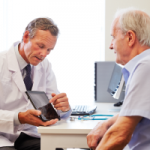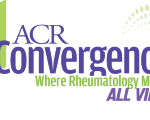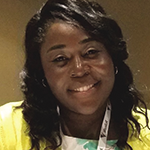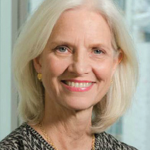The training she received in India may have given her an edge as a diagnostician. “I learned clinical skills there, because there aren’t funds for diagnostic and laboratory tests,” she says. “That experience makes me appreciate all that I have now,” she adds.
She returned to the U.S. for her internship, residency and a rheumatology fellowship at Case Western Reserve University. During her internal medicine residency, Dr. Sivaraman did an elective in rheumatology, “because I didn’t know much about it. I wanted to explore and learn more.” She found a connection. “The clinical work was challenging, and I enjoyed the puzzle-solving aspect.” Another plus of the specialty for her is the work and personal life balance it offers. “Rheumatologists are happy doctors,” she says.
Dr. Sivaraman particularly liked her mentors and the scientific research at Case Western. “The advances in research keep it interesting,” she says. Because her mentors were entering retirement range, she started looking around for her next place to work. As a former Southern California girl, she ended up narrowing her search to three options in Texas—another warm environment. Rheumatology Associates won out. “It seems the perfect place to grow,” she says.
The staff includes three American College of Rheumatology past presidents. “That’s quite a recommendation,” she says. “I am very fortunate to be here.”
Long & Winding Road
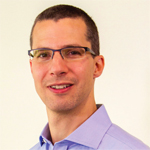
Eyal Kedar, MD
Eyal Kedar, MD, rheumatologist, is on staff at St. Lawrence Health System, Canton-Potsdam Hospital in northeastern New York. He received his medical degree from the University of California, San Diego, but the move from California to New York is hardly the longest journey for him. Dr. Kedar was a high school physics teacher when he decided to join the Peace Corps. He spent three years in the Kingdom of Tonga. After that time in the tropics, Dr. Kedar found himself curious about infectious diseases, so he enrolled in medical school. He spent a year doing HIV research in the San Diego area.
During his combined clinical and research rheumatology fellowship at the University of Washington in Seattle, he spent three years doing bench research on an enzyme in lupus. “My interest was the interface between immunology and metabolism. Immunology is what brought me to my [rheumatology] fellowship.”
His current situation suits him well. He loves the combination of clinical work and research. He’s able to devote 10 hours a week to research, while dealing with patients both in and out of the hospital. “Solving hard cases is rewarding.” He is the only rheumatologist in the geographically largest county in New York. The largely rural, under-served population includes patients who were both long undiagnosed and long untreated. New patients face a six-month waiting list, but he hopes to add more mid-level staff this year.
Only Pediatric Rheumatologist in County
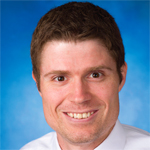
Brett Smith, DO
